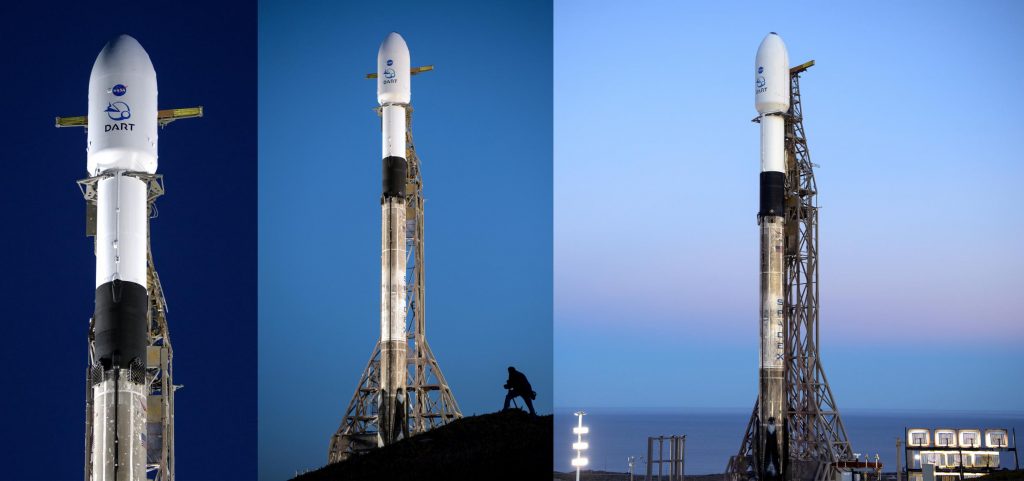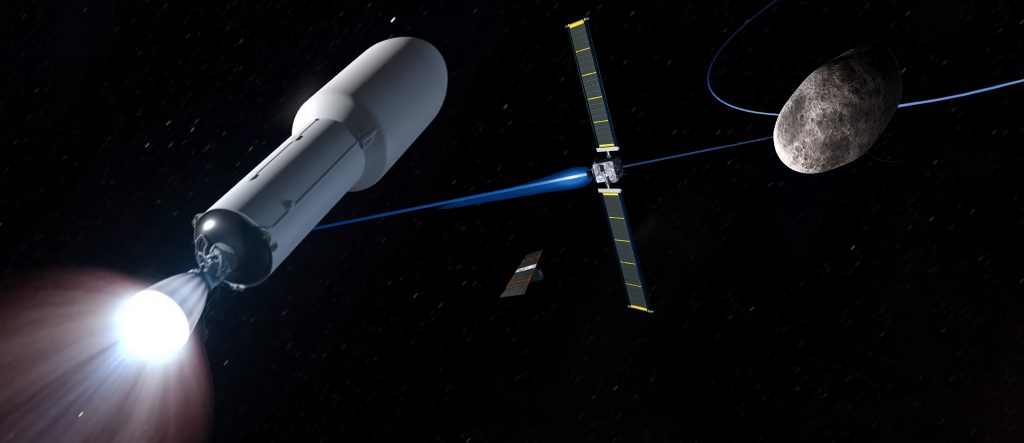SpaceX is firmly on track to launch NASA’s Double Asteroid Redirection Test (DART) mission – sometimes half-seriously referred to as the first spacecraft designed to avenge the dinosaurs – at 10:21 pm PST, Tuesday, November 23rd (06:21 UTC 24 Nov).
Weighing about 622 kilograms (1370 lb) at liftoff, the Johns Hopkins-built spacecraft will be sent directly towards the binary Didymos asteroid system by a SpaceX Falcon 9 rocket, marking the company’s first interplanetary launch for a paying customer – the first of many more to come. Though DART carries a first-of-its-kind electric thruster and plenty of xenon fuel, Falcon 9 is expected to do almost all of the work, leaving the spacecraft to perform a few small trajectory correction burns with simple chemical thrusters as it homes in on Didymos’ moon Dimorphos.

After liftoff, Falcon 9 will send DART on a trajectory that will take around ten months to reach Dimorphos. About 10 days before that ‘arrival,’ Italian-built cubesat LICIACube will separate from DART and back a few kilometers away. As a result, LICIACube will intentionally miss both asteroids but will be as close as possible to ensure that the two cameras it carries have a front-row seat when DART slams into Dimorphos at 6.6 km/s (4.1 mi/s). Interestingly, while the goal is obviously to not miss, a DART project manager indicated that the spacecraft would probably have plenty of longevity – and 90% of its electric thruster propellant – to retarget a different asteroid system in the event it somehow misses.
If it succeeds, though, NASA anticipates that it’ll be able to observe a slight 1.5% change in Dimorphos’ orbital period (how long it takes to orbit Didymos) with Earth-based telescopes. The most important part of the mission will be confirming whether those theoretical estimates are accurate and, if they aren’t, which assumptions were wrong. Planetary defense is a brand new science and DART will be its first truly verifiable test, so it’s more likely than not that most prelaunch predictions will be somewhat wrong and that determining why they were wrong will help scientists learn about the behavior of asteroids.
Perhaps one day – building upon DART, follow-up reconnaissance mission HERA, and other asteroid missions like Hayabusa2 and OSIRIS-REx – NASA and other space agencies will team up to develop a fleet of planetary defense spacecraft that can intentionally redirect asteroids that threaten Earth, preventing catastrophic impacts like the one that likely wiped out 75% of species and virtually all nonavian dinosaurs around 66 million years ago.
Watch SpaceX’s first interplanetary Falcon 9 launch live at the webcast below, likely beginning around 9:50 pm PST (05:50 UTC).


I learned a lot from this article. Keep up the great work!
Great read! I appreciate the effort you put into researching this.